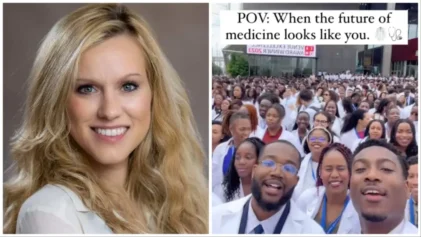Black and Latino survivors and descendants of California residents burned out of their homes in the 1960s are demanding up to billions of dollars in direct payments from the city that displaced them.
Pearl Devers said the parcel of land her father built their home on in downtown Palm Springs in the 1950s when she was a child was a “safe haven.”

Several Black and Latino families moved to the area, 100 miles east of Los Angeles, after the federal government started allowing short-term leases on the land owned by the Agua Caliente Band of Cahuilla Indians. It was a thriving community nestled away from racism, where Black and Mexican-Americans were “all like family,” Devers said.
“It was a neighborhood where your neighbors knew you. They took care of you,” she said at a press conference announcing a legal claim against the city for reparations last month. “It was the real it takes a village type of living because that’s what we did. We took care of one another. We played in the streets till dawn until dark and ate at each other’s homes.”
However, years later, when the federal government approved long-term leases in the area, the city saw an opportunity for commercial development, and the mayor didn’t want signs of “poverty” to be an eyesore for the rich and famous, the Los Angeles Times reports.
Instead of compensating and relocating the working-class families, the city bulldozed and burned over 200 homes and other properties. Economists estimate the families are owed $400 million to $2 billion in reparations.
“Many of you know Palm Springs to be an exotic resort location in the desert, a place that is the playground for the rich and famous, the ultra-wealthy, and the Hollywood elite,” said attorney Areva Martin who filed the updated claim on behalf of six families. “But as Palm Springs was developing into this exotic playground, this place that many call their vacation home, it was keeping a very, very dark secret.”
The city displaced about 1,000 chauffeurs, builders and domestic workers in the mid-1960s, activists said. In 1964, Palm Springs proposed that Cahuilla Indians, through land conservators, terminate the short-term leases, so they could clear the 646 acres of land.
The conservators gave tenants 30-day eviction notices. However, some residents said they did not receive the notices. Others said their homes were destroyed before the deadline, and their belongings burned inside and were stolen.
Devers said her father was a carpenter who built their home from “scratch.” He also helped build other homes in the neighborhood, she said, and when he got tired of complaints about sharing a closet with her two brothers, he built a special closet for Devers in the house.
“My dad, he was my hero,” Devers said.
Devers’ father was also a community spokesperson who helped start the local chapter of the NAACP. One day, “out of the blue,” Devers, her mother and her siblings left their home leaving her father behind, but she did not immediately understand why. They bounced around to different friends’ homes on Section 14, she recalled
“My daddy was one that was going to stick it out. I had no idea why we were leaving as a child, but I later found out that we were forced out of our home,” Devers said.
It took a toll on Devers’ father. He begin to drink and became an alcoholic, she said.

“This took him out,” Devers said. “He was a man that was used to taking care of his family.”
The conservators posted the eviction notices without the full knowledge of the Indians, according to a 1968 report by the attorney general’s office, and “were induced to execute various documents by statements of the conservators that they could lease the land at higher rentals.”
Some of the houses were made of cinderblock, and others were wood-frame homes and shacks.
Then-mayor Frank Bogert backed the eviction-by-fire process. He told The Los Angeles Times in 2001 that he “was scared to death that someone from Life magazine was going to come out and see the poverty, the cardboard houses, and do a story about the poor people and horrible conditions in Palm Springs just half a mile from the Desert Inn, our high-class property.”
The attorney general’s office compared the razing of the neighborhood to a holocaust and said it was a “classic study in civic disregard for the rights and feelings of minority citizens.”
However, Palm Springs did not break any laws, according to the report. The city acknowledged wrongdoing and apologized last year.
Still, economist Julianne Malveaux, who assessed the debt owed to the families, said it was not enough. She compared the atrocity to the Tusla Massacre in Oklahoma, the Rosewood Massacre in Florida and the Wilmington Massacre in North Carolina, where white angry mobs burned down homes.
Decade after decade, local, state and federal governments have used eminent domain and other official sanctions to pilfer Black people’s homes and land in the name of development.
Black Palm Springs resident and activist Dieter Crawford said the city’s apology was “long overdue.”
“An apology is just symbolic,” Crawford said. “I want to see reparations too. We lost generational wealth and not just from our residential homes but from our institutions like the First Baptist Church, which was first located on Section 14 and then rebuilt by the community.”
Malveaux said the reparations estimate is based on the current value of the homes that were burned, the inflation rate and the rate at which housing is rising.
Watching houses burning in her neighborhood was “horrifying” for Devers as a child, and it has permanently broken her heart, she said.
“My family was split — a lot of emotional trauma,” Devers said.


